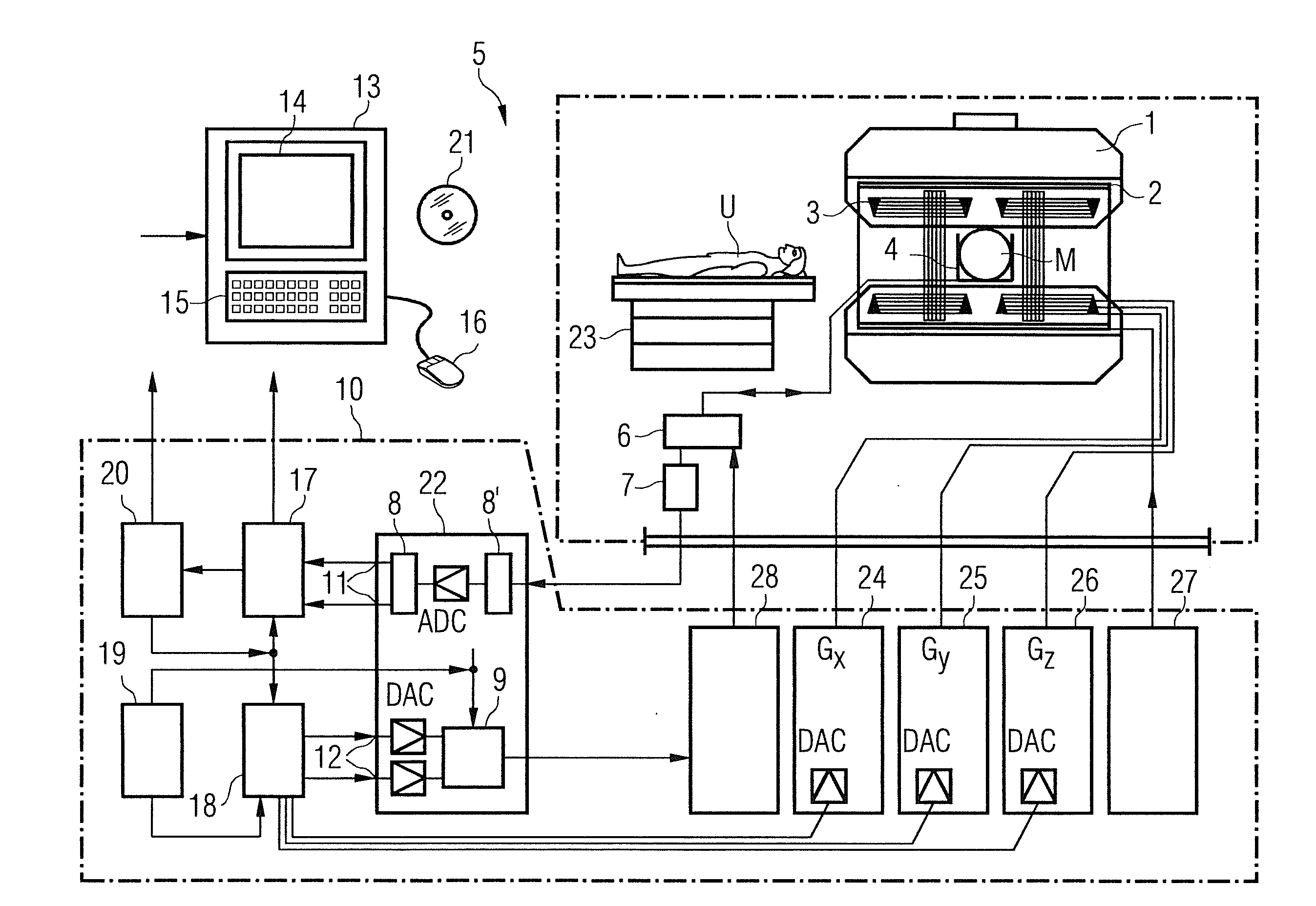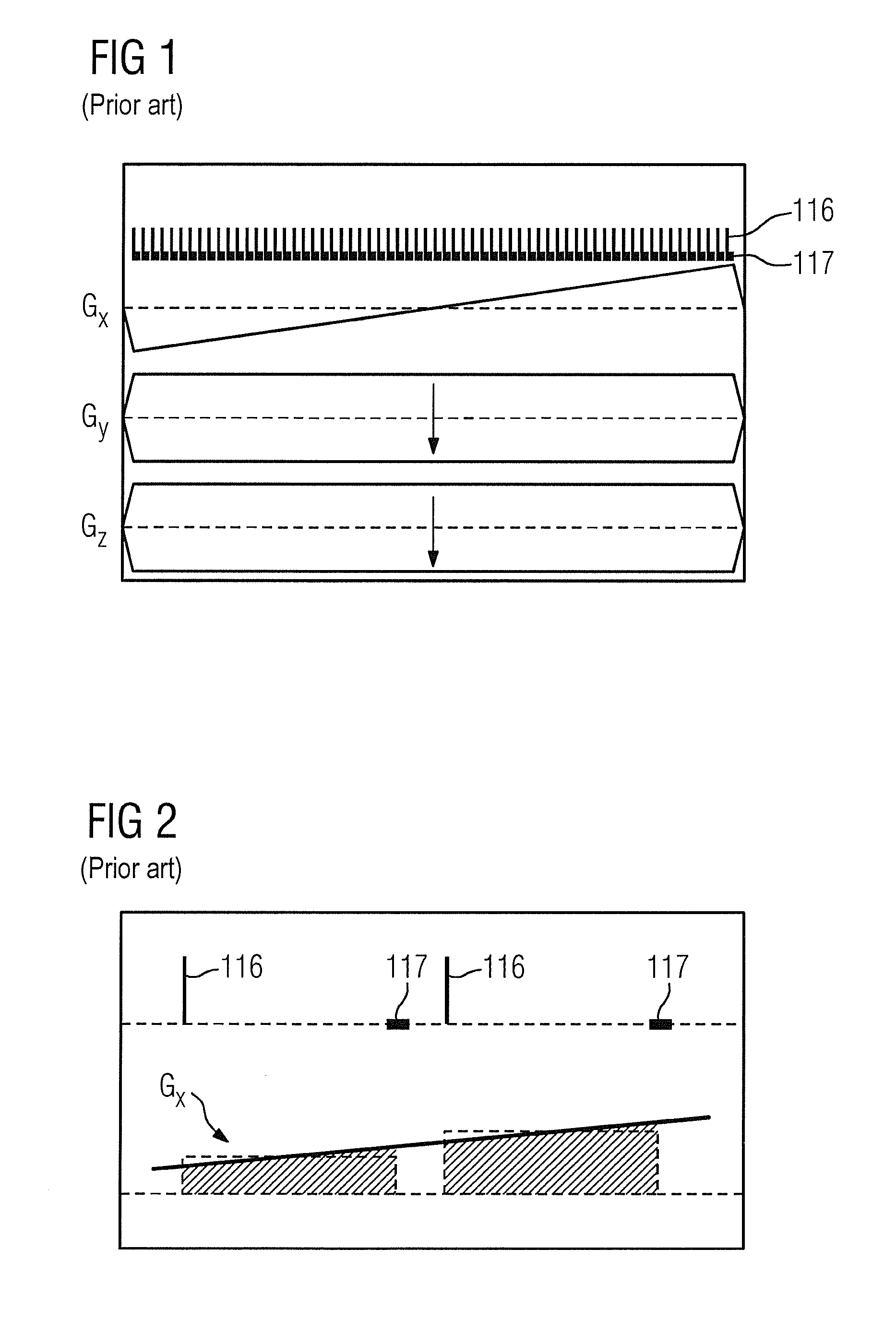Method and magnetic resonance apparatus for non-selective excitation of nuclear spin signals in an examination subject
a magnetic resonance apparatus and non-selective excitation technology, applied in the field of non-selective excitation of nuclear spin signals in examination subjects, can solve the problems of limited application, blurring of affected regions of examination regions, and increase of blurring artifacts
- Summary
- Abstract
- Description
- Claims
- Application Information
AI Technical Summary
Benefits of technology
Problems solved by technology
Method used
Image
Examples
Embodiment Construction
[0024]A known sequence to acquire a line in k-space is shown in FIG. 1. It is apparent that the two phase coding gradients Gy and Gz are activated with a constant strength, while the strength of the third phase coding gradient Gx increases continuously.
[0025]The acquisition of two raw data points according to FIG. 1 is presented in detail in FIG. 2. It is apparent that the echo time—i.e. the time interval from the RF excitation pulse 116 up to the beginning of the readout time period 117 00 is constant. Moreover, the phase coding gradient Gx travels in stages from bottom to top. The phase coding gradient Gx to read out a raw data point is thereby held constant, which means that the phase coding gradient Gx is held constant for the time period TE (echo time).
[0026]According to the invention, the base frequency of the radiated RF excitation pulses 116 is adapted to the respective simultaneously switched gradients Gx, Gy, Gz. This means that the base frequency of each RF excitation pul...
PUM
 Login to View More
Login to View More Abstract
Description
Claims
Application Information
 Login to View More
Login to View More - R&D
- Intellectual Property
- Life Sciences
- Materials
- Tech Scout
- Unparalleled Data Quality
- Higher Quality Content
- 60% Fewer Hallucinations
Browse by: Latest US Patents, China's latest patents, Technical Efficacy Thesaurus, Application Domain, Technology Topic, Popular Technical Reports.
© 2025 PatSnap. All rights reserved.Legal|Privacy policy|Modern Slavery Act Transparency Statement|Sitemap|About US| Contact US: help@patsnap.com



